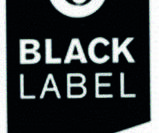Going for global
Roshani Muniweera offers the tale of a problematic appeals decision. C-328/18 P, Equivalenza Manufactory SL v EUIPO, CJEU, 4th March 2020.

This case relates to opposition proceedings between Equivalenza Manufactory SL (EM) and ITM Enterprises SAS (ITM). In brief, EM filed an EU trade mark application for a mark covering “perfumery”. ITM opposed EM’s application under Article 8(1)(b) EUTMR, on the grounds there was a likelihood of confusion with its earlier mark, protected in several EU territories and covering “cologne, deodorants for personal use (perfume), [and] perfumes”. The Opposition Division upheld ITM’s opposition on the grounds that there was a likelihood of confusion on the part of the relevant public in the Czech Republic, Hungary, Poland and Slovenia. EM appealed.
The EUIPO’s Second Board of Appeal (BoA) dismissed the appeal, holding that the goods were identical and, while the marks were conceptually dissimilar, there was an average degree of visual and phonetic similarity between the signs, resulting in a likelihood of confusion when assessed globally.

EM then brought an action before the General Court (GC) to annul the BoA’s decision. The GC upheld the appeal, finding that the signs at issue have an average degree of phonetic similarity, produce a different overall visual impression and are conceptually different due to the additional words BLACK and BY EQUIVALENZA. The GC annulled the BoA’s decision, holding that it had erred in law in finding a likelihood of confusion.
Next steps
The EUIPO appealed the GC’s decision, arguing that the GC contradicted itself by noting a low degree of similarity due to the presence in both signs of the letters L, A, B, E and L, yet going on to exclude visual similarity by stating that the overall impression produced by each sign was “visually different”. The CJEU agreed with the EUIPO’s allegation of “contradictory reasoning” when it came to the visual similarity of the signs.
The EUIPO also submitted that the GC made a “methodological error” by taking into account the circumstances in which the goods were marketed at the stage of comparing the signs. Further, the EUIPO claimed that the GC committed “errors of law” affecting the assessment of the similarity of the signs at issue. The CJEU agreed, noting that the GC had incorrectly given visual differences between the signs precedence over phonetic similarity.

In addition, the CJEU found that the GC had erred in law by dispensing with the global assessment of the likelihood of confusion on the basis that it had found that the conceptual dissimilarity between the signs outweighed their phonetic similarity. The CJEU explained that the GC may only dispense with the global assessment of the likelihood of confusion where, despite visual or phonetic similarities, one of the signs has a clear and specific meaning that can be grasped immediately by the relevant public, producing a different overall impression. The GC had not indicated that this was the case.
The CJEU therefore supported the BoA’s conclusion that there is a likelihood of confusion between the signs and that the presence of the additional elements BLACK and BY EQUIVALENZA are not sufficient to rule it out. EM’s appeal was rejected and the CJEU dismissed the action.
Key points
- Following some inconsistent case law, the CJEU makes clear that marketing factors are not to be taken into account at the stage of assessing similarity. Marketing factors are relevant only at the stage of the global assessment of the likelihood of confusion
- Conceptual differences between signs may outweigh visual and phonetic similarities where one of the signs has a clear and specific meaning that can be grasped immediately by the relevant public. Only in such an exceptional case can you dispense with the global assessment


